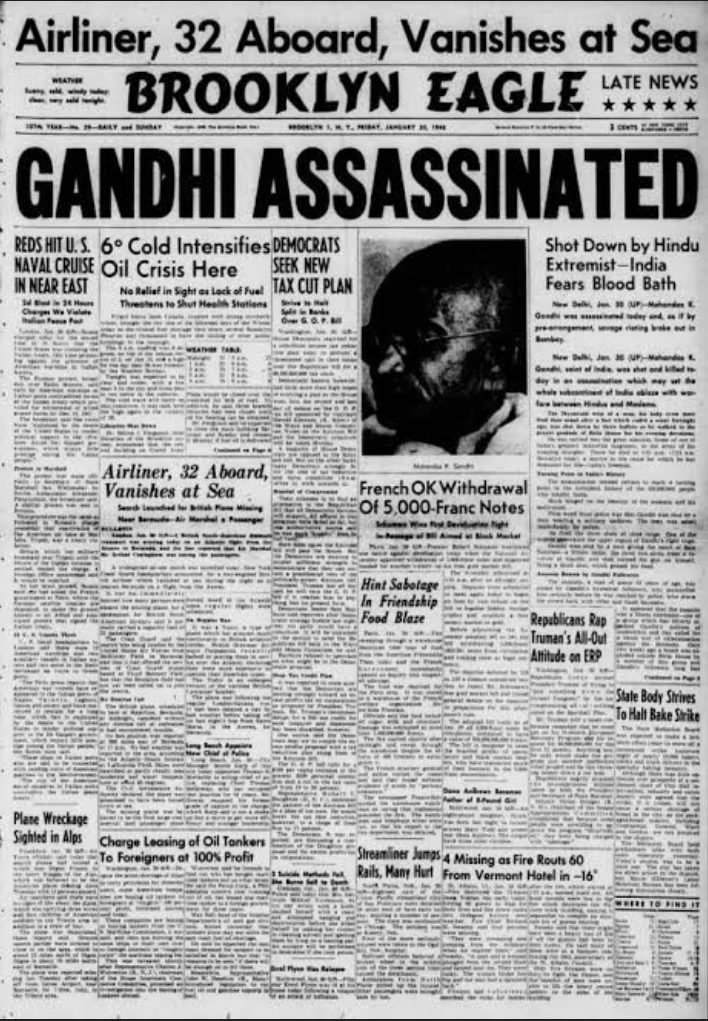
Prime Minister Narendra Modi was interviewed by three ABP journalists — Romana Isar Khan (news anchor, ABP), Rohit Singh Saval (output editor, ABP News) and Suman De (senior vice-president, ABP Ananda) on May 28, 2024.
At the 1.05.31-minute mark in the conversation, Modi was asked about the opposition’s absence in the Ram temple consecration ceremony and whether their decision would have an impact on the election results. In reply, the prime minister criticised the opposition saying they could not come out of a mentality of servitude. He then went on to add, “Mahatma Gandhi was a great man. Wasn’t it our responsibility in these 75 years to make sure that the world knew Mahatma Gandhi? Nobody knows Mahatma Gandhi. It was only when the ‘Gandhi’ film was made that the world was curious to know who this man was. We haven’t done it. It was our responsibility. If the world knows Martin Luther King, if the world knows the South African leader Nelson Mandela (the interviewers prompt the name before Modi repeats it), Gandhi was no less than them. You have to accept this. I am saying this after travelling across the globe…”
It is understood that the prime minister referred to British filmmaker Richard Attenborough’s biopic of Gandhi released in 1982, where Ben Kingsley played the eponymous character. The following year, ‘Gandhi’ received 11 Academy Award nominations and won 8, including the Academy Award for Best Picture, Best Director and Best Actor in a Leading Role.
Prime Minister Modi is Wrong
To say that Mohandas Karamchand Gandhi was largely unknown to the world till the 1982 movie is to betray a lack of basic awareness about the life and times of the most iconic Indian who ever lived. The international media coverage of Gandhi from as early as the 1920s and several other kinds of documentary evidence of his popularity in the West — among celebrities and common folks alike — prove this beyond an iota of doubt.
Gandhi in International Media
A simple keyword search on Google with the terms ‘Gandhi on international newspapers’ reveals several reports on Gandhi by prominent international newspapers and also lesser known dailies from the West from the 1920s till his death in 1948 and beyond.
Gandhi’s arrest on March 10, 1922, in Ahmadabad for writing three articles in ‘Young India’ was reported by the illustrated British weekly, The Graphic, on March 18, 1922. This is one of the first mentions of him in a Western newspaper.
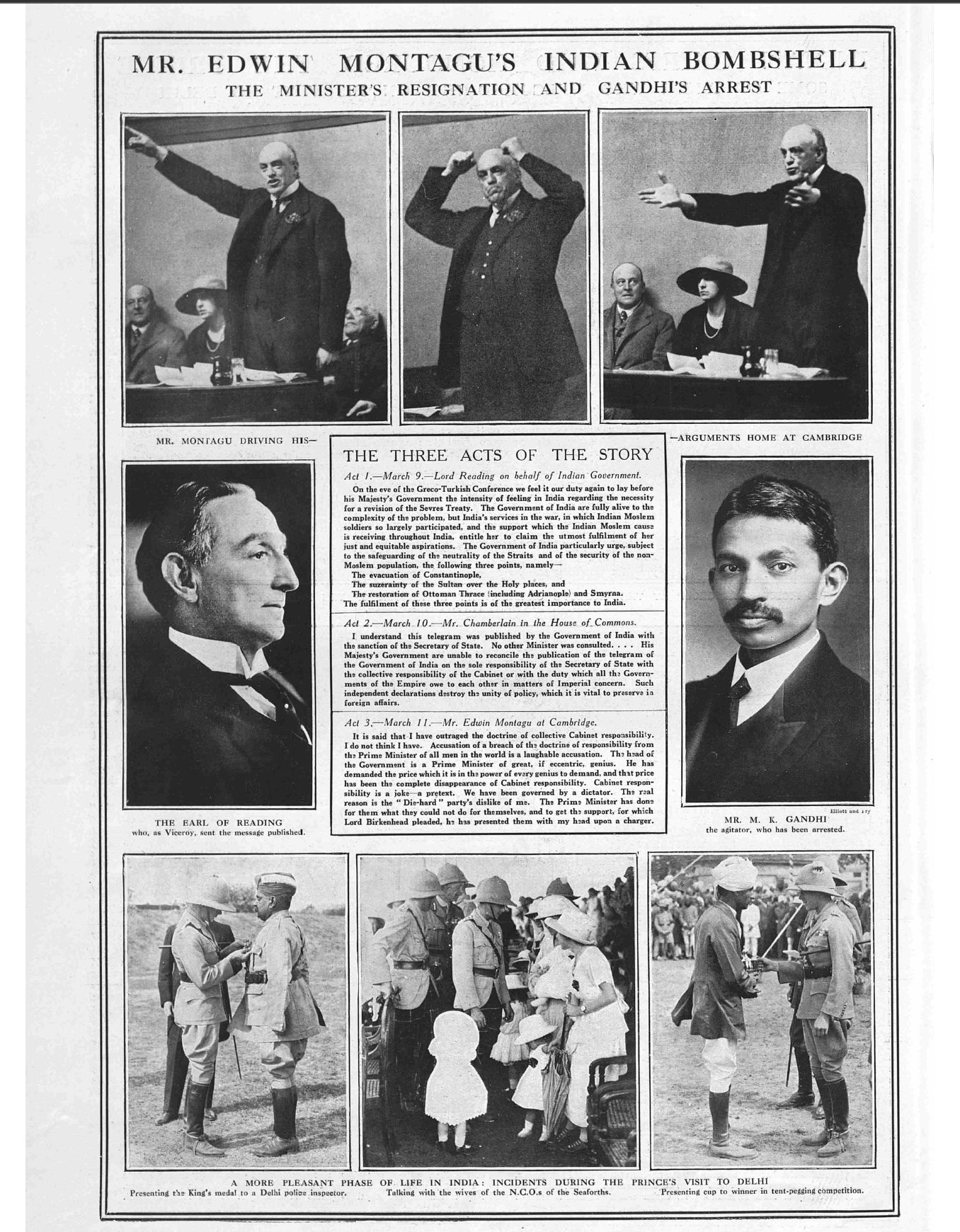
The Civil and Military Gazette, published from Lahore, on March 12, 1922 carried a Reuters report on an agitation in Nairobi in response to Gandhi’s arrest.
Among the prominent Western media outlets, mention must be made of The Time magazine which featured Gandhi as its Man of the Year in 1930. The related article was published on January 5, 1931, and was headlined “Saint Gandhi”: Man of the Year 1930. It said, “It was exactly twelve months ago that Mohandas Karamchand Gandhi’s Indian National Congress promulgated the Declaration of Indian Independence. It was in March that he marched to the sea to defy Britain’s salt tax as some New Englanders once defied a British tea tax… It was in May that Britain jailed Gandhi at Poona. Last week he was still there, and some 30,000 members of his Independence movement were caged elsewhere. The British Empire was still wondering fearfully what to do about them all, the Empire’s most staggering problem … it was in a jail that the year’s end found the little half-naked brown man whose 1930 mark on world history will undoubtedly loom largest of all.”
The cover of the concerned issue of The Time had Gandhi’s portrait.
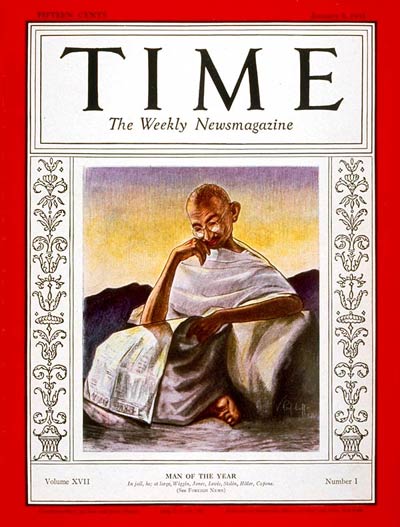
‘The father of the nation’ would be on The Time Magazine cover on two more occasions, on March 31, 1930 and June 30, 1947.
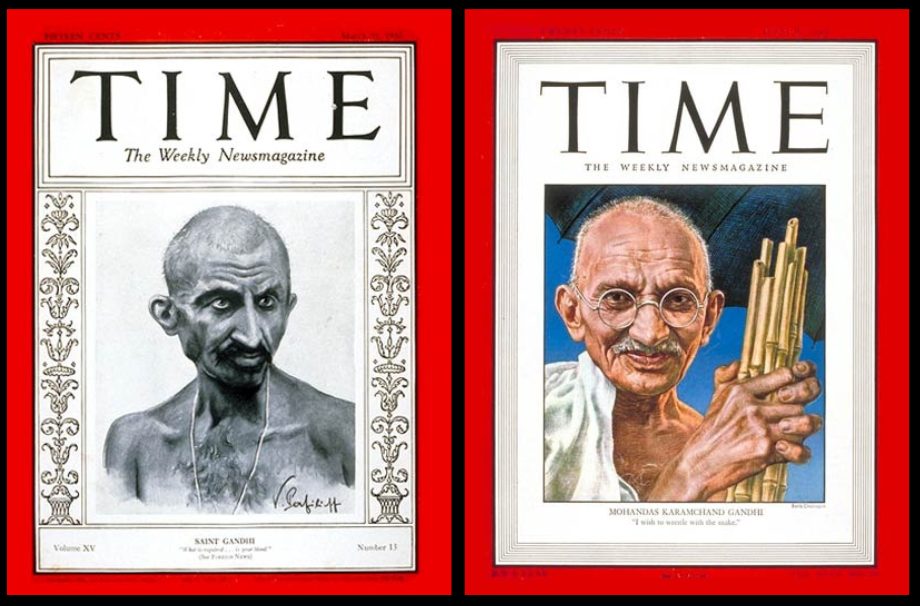
One of the most well-known portrayals of Gandhi in an international newspaper was the Iowa-based Burlington Hawk-eye’s full page feature on him on Page 5 on September 20, 1931. The banner headline read, “Most Talked About Man in the World”.
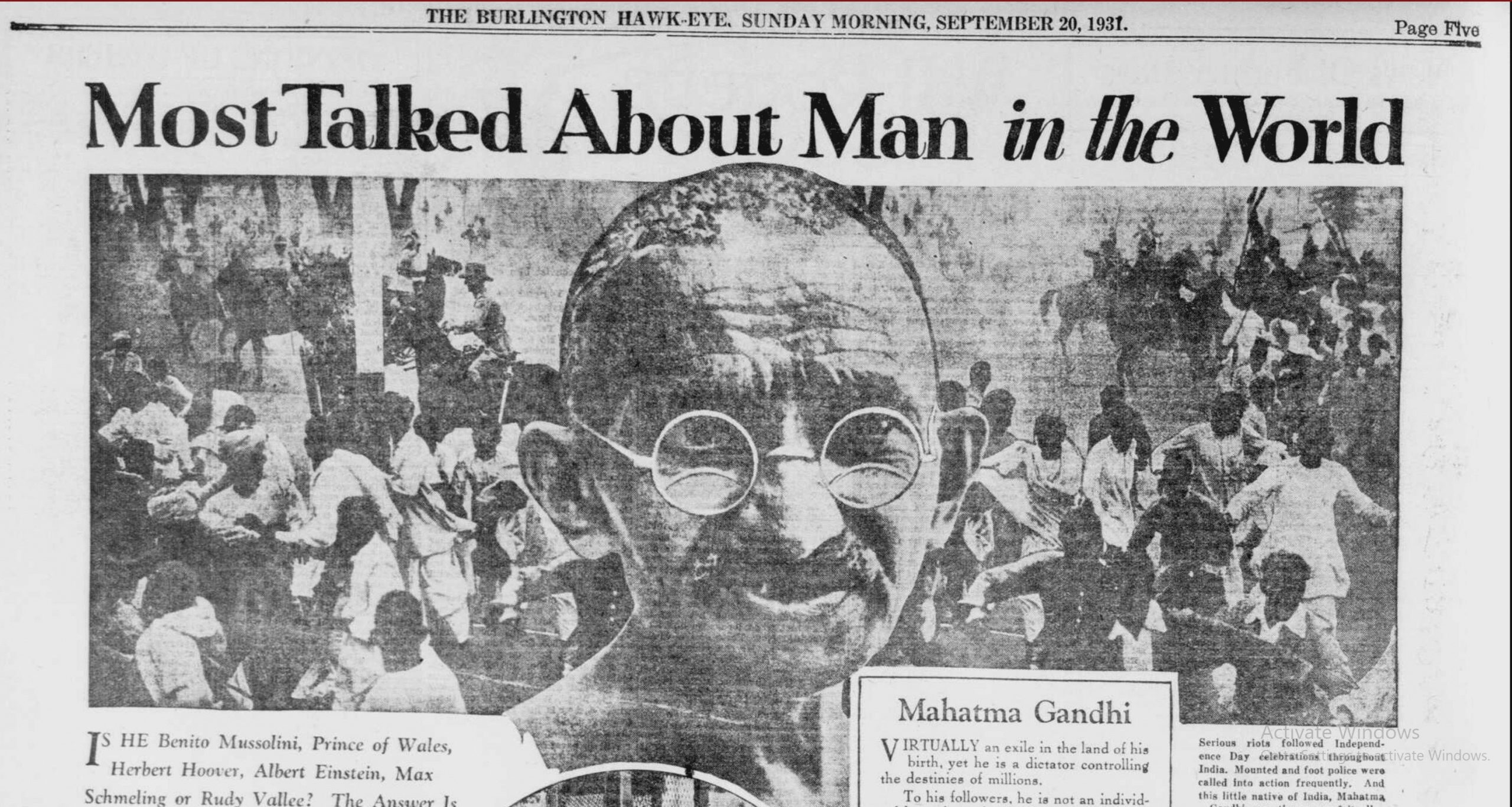
The iconic photograph of Gandhi at his spinning wheel, too, was taken by a foreigner. In 1946, American documentary photographer Margaret Bourke-White was in India working on a feature which would eventually be published under the headline “India’s Leaders,” in the May 27, 1946, issue of LIFE. The photo of Gandhi at the wheel did not make it to the gallery which had two other pictures of him. A couple of years later, the iconic photo was used by LIFE in its multiple-page tribute to Gandhi after his assassination.
The news of Mahatma Gandhi’s assassination on January 30, 1948 was on the front page of several foreign newspapers. Below are a few examples:
The New York Times
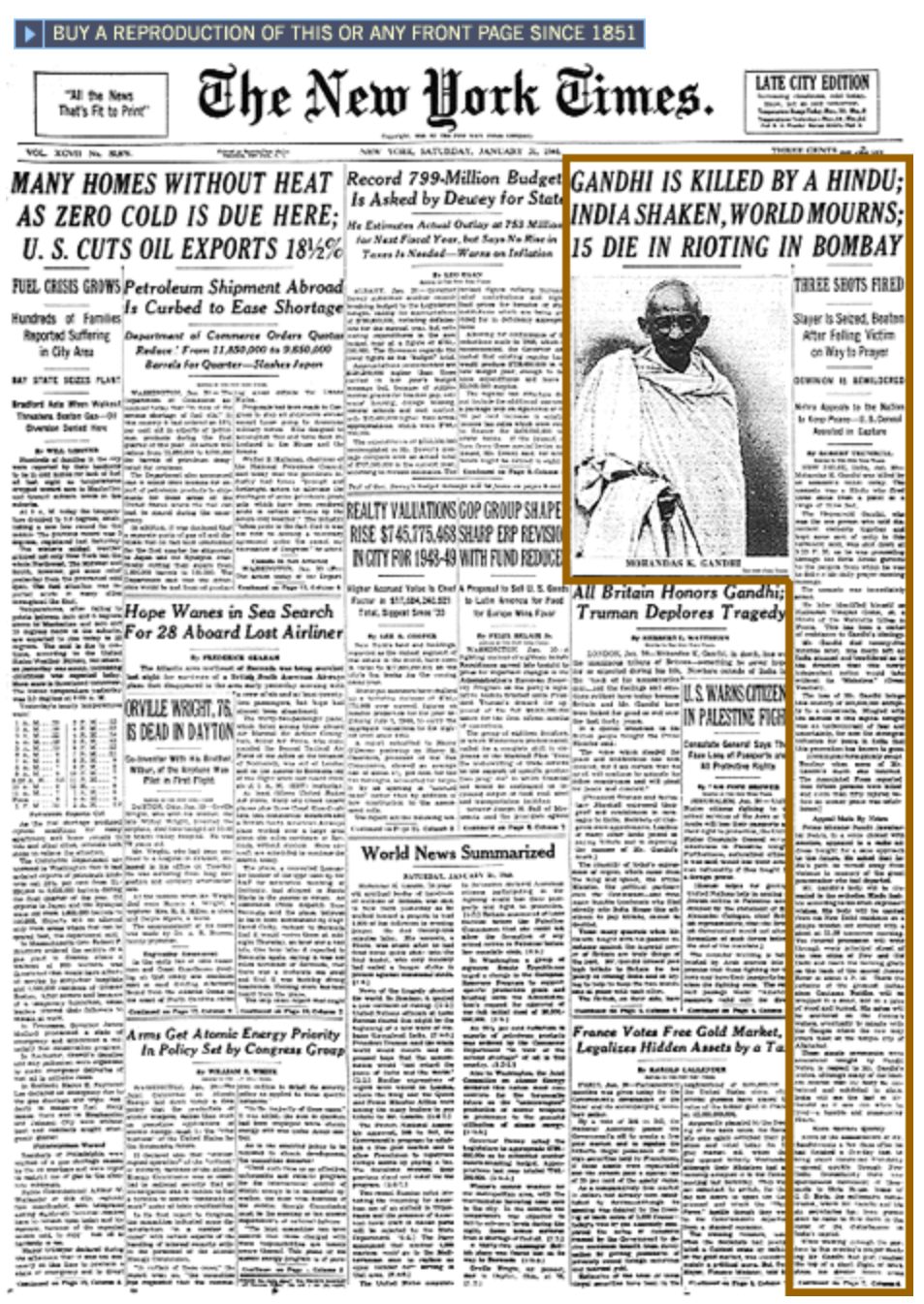
The report can be read here.
The Guardian
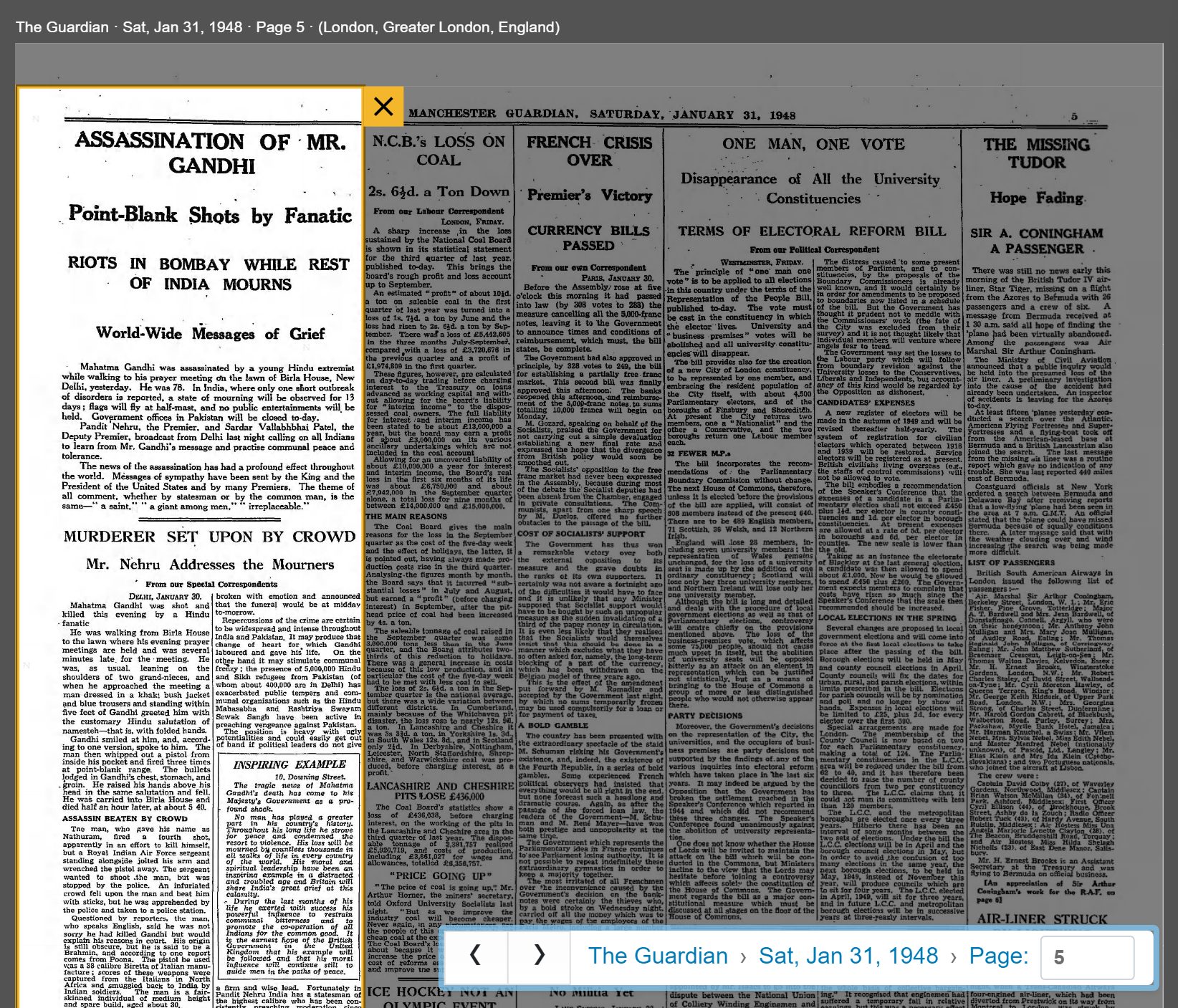
The report can be read here.
The Washington Post
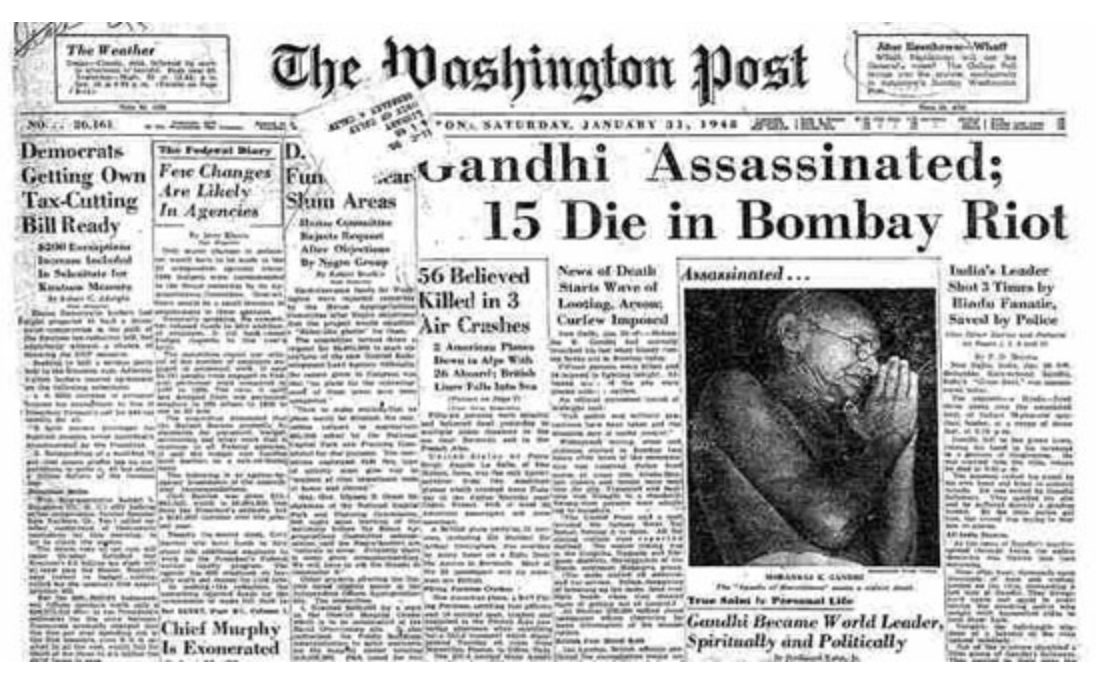
The Daily Telegraph
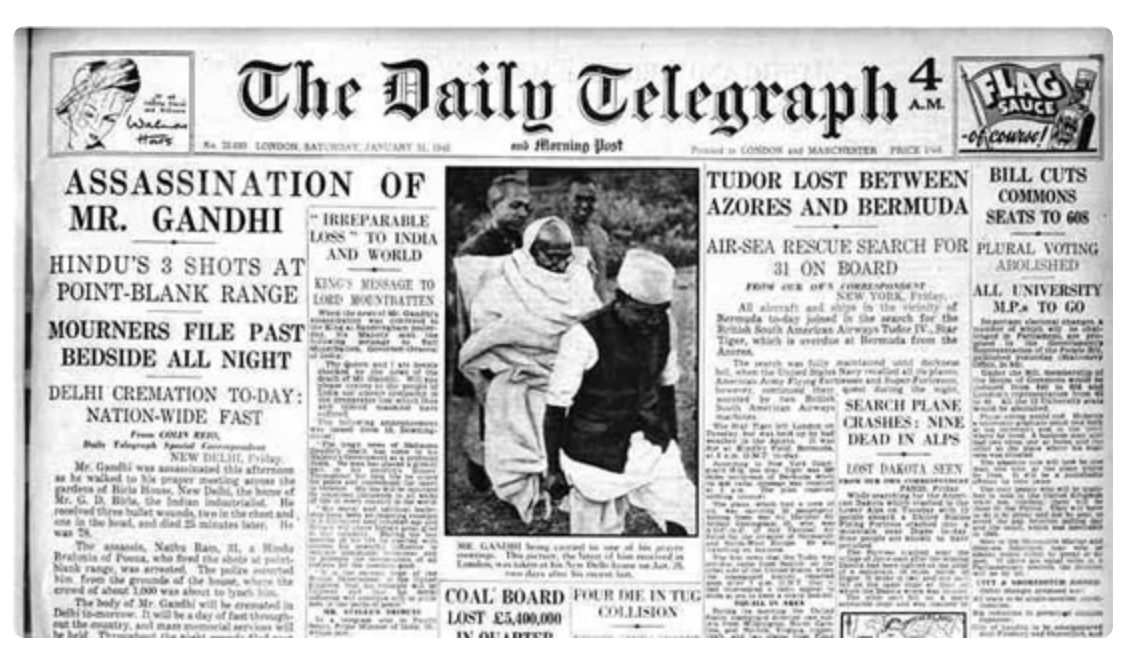
The keen interest which the West took in Gandhi and his ideas is best exemplified by the eagerness of some of the biggest celebrities from Europe and the US to know him personally. One instance that readily comes to mind is Gandhi’s meeting with Charles Chaplin.
Chaplin, by then dubbed as the most famous man in the world, was keen to meet Gandhi when the latter was in London to attend a Round Table Conference in 1931. Gandhi, totally uninterested in films, had not heard of him. According to reports, the man who was hosting Gandhi at Kingsley Hall told him that he must meet Chaplin, who was the most famous man in the world “except for you, of course”. Gandhi agreed to meet Chaplin only after someone had told him that the latter “was sympathetic to our cause”. The meeting eventually took place on September 22, 1931, at 45 Beckton Road in Canning Town, London.
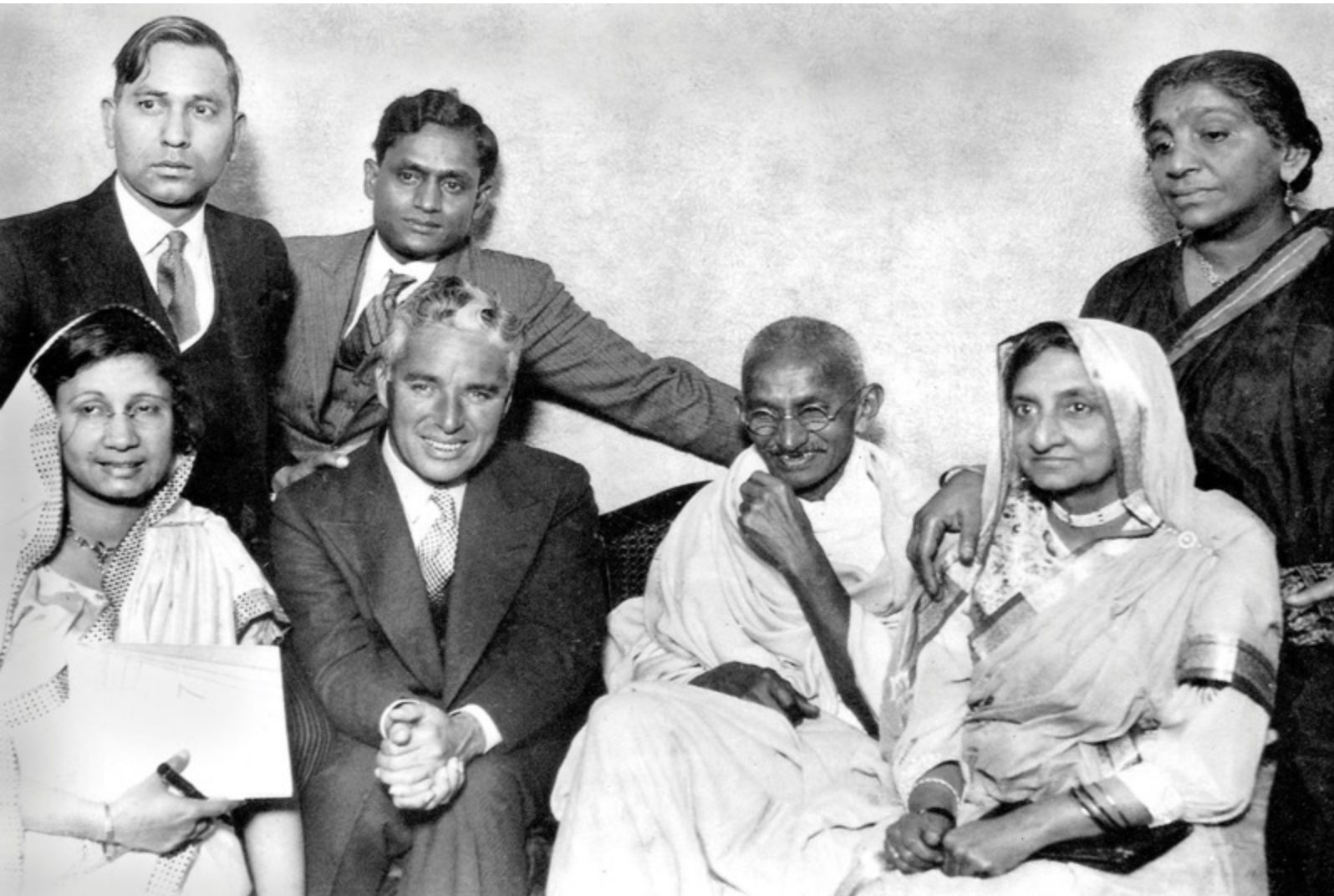
Chaplin described the meeting and the exchange of ideas elaborately in his autobiography (Pages 342, 343).
Martin Luther King Jr wrote a piece on the Hindustan Times paying his tributes to Gandhi on the latter’s 10th death anniversary in 1958. He wrote:
“He (Gandhi) would resist evil as much as the man who uses violence, but he resists it without external violence or violence of the spirit. That is what Gandhism does. It is a method of the strong. If the only alternative is between cowardice and violence, it is better — as Gandhi said — to use violence, but there is another way. I myself gained this insight from Gandhi. When I was in theological school, I thought the only way we could solve our problem of segregation was an armed revolt. I felt that the Christian ethic of love was confined to individual relationships. I could not see how it could work in social conflict. Then I read Gandhi’s ethic of love as revealed in Jesus but raised to a social strategy for social transformation.”
Among others, Albert Einstein’s correspondence with Gandhi has been studied by followers of the two men over the ages with keen interest. In 1931, he wrote in a letter to Gandhi, “You have shown through your words, that it is possible to succeed without violence even with those who have not discarded the method of violence. We may hope that your example will spread beyond the borders of the country… I hope that I will be able to meet you face to face someday.”
Later, on Gandhi’s 70th birthday in 1939, Einstein wrote of Gandhi, “Generations to come, it may be, will scarce believe that such a one as this ever in flesh and blood walked upon this earth.” In fact, Prime Minister Modi himself quoted this in his op-ed piece in The New York Times on October 2, 2019, titled “Why India and the World Need Gandhi”. In the same piece, he also wrote about the influence Gandhi had on Nelson Mandela and Martin Luther King jr.
The list of Western celebrities who knew Gandhi personally or from a distance before 1982 is, perhaps, endless. Among them are Leo Tolstoy, George Bernard Shaw, Ho Chi Minh, John Lennon, Pearl S Buck et al. American journalist Louis Fischer wrote ‘The Life of Mahatma Gandhi’, possibly the most widely read biography of the man, in 1950.
It is not that only the notable men took a keen interest in Gandhi. The following video, uploaded on YouTube by the Press Information Bureau of the Govt. of India, shows a large crowd of “working class people” greeting Gandhi in Lancaster and London in 1931.
Besides, several countries issued postage stamps in honour of Gandhi way before the 1982 film was even shot. These include the US in 1961, the Republic of Congo in 1967, and around 40 countries on Gandhi centenary in 1969.
It is, thus, inexplicable, why Modi claimed that Gandhi was unknown to the world before the 1982 movie. The claim, coming from the Prime Minister of India, is factually incorrect and bizarre.
Sources: The British Newspaper Archive, mkgandhi.org, PIB, archives of publications mentioned in the story.




